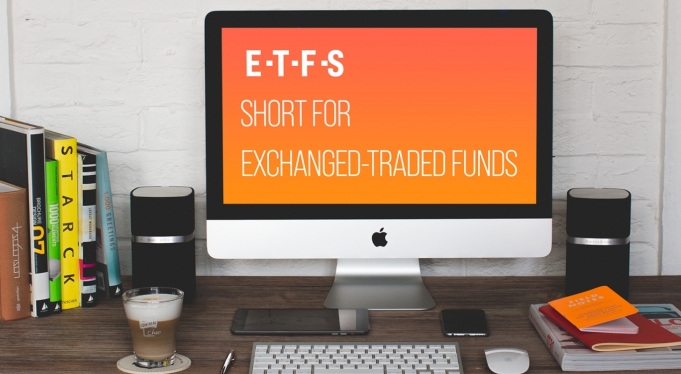ETFs (short for Exchanged-Traded Funds) are useful investment vehicles that track and hold a basket of securities and are traded on liquid markets such as the Toronto Stock Exchange (TSX) and New York Stock Exchange (NYSE). ETFs prices are quoted throughout the day and are traded very much like stocks so they are very easily accessible by the individual investor.
What’s the difference between Mutual funds and ETFs?
A good place to start is to recognize what they have in common: They are both baskets of securities that provide diversification. The main difference however lies in their trading and operating structure, fees and available options.
Starting with trading structure, ETF prices are quoted throughout the day and are easily accessible through exchanges, making it easy for Do-It-Yourself (DIY) investors to purchase ETFs at any point in the day. Mutual funds however, can only be purchased based on their end of day closing prices and are usually purchased through an advisor, with few options on open-exchanges for DIY investors. ETFs also do not have any lock-up periods, while some mutual funds do.
ETFs are more tax-efficient because capital gains are realized only when you sell the fund itself as opposed to mutual funds which realize capital gains throughout the year as the fund manager buys and sells individual securities. ETFs also have less internal trading of securities (aka “turnover”) in general because they are usually not actively managed, reducing transaction costs within the fund.
Finally, and likely the most distinctive difference, is that most mutual funds are actively managed whereas most ETFs are passively managed. This results in a simpler structure for ETFs and in turn, lower overall fees. Fewer internal transactions, less management and the lack trailing and commission fees all contribute to making ETFs a very low-cost way of getting specific investment exposures. It is not uncommon to find mutual funds with fees over 2% of assets, while the majority of ETFs are below 0.5% on fees. That difference can really add up a lot over time!
Shouldn’t actively managed mutual funds justify the fees and get me higher returns than ETFs?
Yes. In theory they should. However, the reality is that active management is often not worth the extra fees. In fact, studies show that 80% of actively managed funds underperformed passively managed funds based on five-year average annual returns in Canada and 75% underperformed in the US.
In addition, mutual fund investing can be quite limiting to the DIY investor who wants to formulate and customize their own strategy since actively managed mutual funds tend to have very specific exposures based on the mandate of the fund. However, this can be a positive point for investors who want a ‘hands off’ approach to investing.
So Why invest in ETFs?
Aside from the low fees, ETFs are great for creating diversification in a portfolio with a minimal number of portfolio positions and little investment knowledge. For many DIY investors who buy individual stocks, ETFs make filling ‘diversification gaps’ in their portfolios very easy. ETFs are also a great option for investors to get exposure to low knowledge areas.
For example, if you would like more exposure to health care in your portfolio, but you are unfamiliar with the space in general, buying a health care ETF can get you instant diversified exposure to the health care space in general. This is also effective for diversifying away company specific-risks that come with investing in a single company.
Getting general exposure to a sector, industry or geography also encourages one to learn more about it, which over time leads to more comfort in picking individual stocks for that area of exposure. Granted, we think investing in individual names can be a more powerful way to achieve greater than market returns as performance is more concentrated in individual stocks than in ETFs.
ETFs also provide a broad range of options to choose from. Individual ETFs can be broad enough to create a well-diversified portfolio on their own or even as specific as a gene-editing funds. ETFs can be focused on providing exposures to different asset classes, sectors, geographies, styles and strategies. Investors can play it safe or get really experimental with ETFs.
One thing we would caution investors to watch out for with ETFs however is ‘over-diversification’. Because of the variety of options, it is very easy for investors to want to own everything under the sun, but this can be a recipe for portfolio dilution. In other words, each individual ETF will have less of an effect because the position size is too small and to make matters worse, ETFs are already very diversified to begin with, many capable of being entire portfolios on their own.
Overall, what we like about ETFs is that they encourage investment learning and are an effective tool for portfolio building.
Navigating the crowded world of ETFs
The number of ETF traded worldwide are now ~6500 at $5 trillion USD in net assets globally with 75% in the US alone. In Canada there are over 900 ETF options. That’s more than the number of companies on the TSX! ETF assets are growing fast (more than doubled in three years) and are quickly becoming the preferred way for retail investors to invest.
Of course, having so many options can be very overwhelming and that is why we started the ETF & Mutual Fund Update service (aka “ETFMU”) which is dedicated to helping investors sift through the plethora of ETF options out there. On a monthly basis, our letter discusses which funds might make you money, are worth the fees and which ones should simply be avoided.
Here are some of the main features of our service:
Monthly Newsletter
Subscribers receive 12-monthly issues of the ETF and Mutual Fund Update as well as access to all past letters. These letters help you stay up to date with topical articles covering anything from the fund industry to sector trends to global market news. We also highlight new funds and discuss how they can add value to your portfolio.
Recommended Lists
Pick top-quality funds with confidence from one of our ETF or Mutual Fund Recommended lists, updated throughout the year.
Model Portfolios
Three ETF model portfolios for different investor types (conservative, balanced and growth) with reviews and updates throughout the year.
Tools and Resources
Gain access to tools such as our Sector Balancing, Tax-Advantage and Tax-Efficiency tools exclusive only to ETF & Mutual Fund Update members that help to make the investment process smooth and easy.
Take care,

Are you looking to have ongoing access to ETF updates? The ETF and Mutual Fund Update letter help guide investors through an overwhelming array of fund choices to help find the investment product that is best for you. Monthly, our letter will discuss which funds might make you money, are worth the fees and which ones should simply be avoided.







Comments
Login to post a comment.